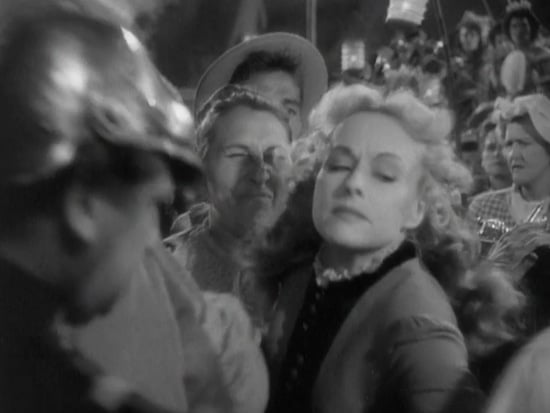Shocking Blocking (41)
By:
December 4, 2012

Jean Renoir’s The Diary of a Chambermaid has been criticized — sometimes harshly — because, these critics have claimed, Renoir doesn’t have a handle on his themes. Is it a Continental sex-comedy? If so, then the movie (with its gothic setting, and its portrayal of insanity, greed, sociopathic lust and murder) isn’t funny enough — nor, given how many American actors it features, and given the artificiality of its settings, is it particularly Continental. Perhaps, then, it is a partisan critique of the capitalist social order, of bourgeois forms and norms? If so, then the movie (in which peasants and aristocrats alike are simpletons, and the one liberal — portrayed by Burgess Meredith — is a raving lunatic) isn’t critical enough; Buñuel’s later, surrealist adaptation of Mirbeau’s novel makes this one look confused and compromised. Comical yet not funny, equal-opportunity in its portrayal of human folly, artificial in the extreme: As its more perceptive critics have noted, what Renoir wants to communicate in The Diary of a Chambermaid is dream logic. And that is what the blocking in this scene — in which Célestine (Paulette Goddard), the aristocrat Georges Lanlaire (Hurd Hatfield), and the murderous valet Joseph (Francis Lederer) struggle through a chaotic crowd — thematizes with nightmarish clarity.
An occasional series analyzing some of the author’s favorite moments in the positioning or movement of actors in a movie.
THIRTIES (1934–1943): It Happened One Night (1934) | The Man Who Knew Too Much (1934) | The Guv’nor (1935) | The 39 Steps (1935) | Young and Innocent (1937) | The Lady Vanishes (1938) | Mr. Smith Goes to Washington (1939) | The Big Sleep (1939) | The Little Princess (1939) | Gone With the Wind (1939) | His Girl Friday (1940)
FORTIES (1944–1953): The Diary of a Chambermaid (1946) | The Asphalt Jungle (1950) | The African Queen (1951)
FIFTIES (1954–1963): A Bucket of Blood (1959) | Beach Party (1963)
SIXTIES (1964–1973): For Those Who Think Young (1964) | Thunderball (1965) | Clambake (1967) | Bonnie and Clyde (1967) | Madigan (1968) | Wild in the Streets (1968) | Barbarella (1968) | Harold and Maude (1971) | The Mack (1973) | The Long Goodbye (1973)
SEVENTIES (1974–1983): Les Valseuses (1974) | Eraserhead (1976) | The Bad News Bears (1976) | Breaking Away (1979) | Rock’n’Roll High School (1979) | Escape from Alcatraz (1979) | Apocalypse Now (1979) | Caddyshack (1980) | Stripes (1981) | Blade Runner (1982) | Tender Mercies (1983) | Monty Python’s The Meaning of Life (1983)
EIGHTIES (1984–1993): Repo Man (1984) | Buckaroo Banzai (1984) | Raising Arizona (1987) | RoboCop (1987) | Goodfellas (1990) | Candyman (1992) | Dazed and Confused (1993) |
NINETIES (1994–2003): Pulp Fiction (1994) | The Fifth Element (1997)
OUGHTS (2004–13): Nacho Libre (2006) | District 9 (2009)
Joshua Glenn’s books include UNBORED: THE ESSENTIAL FIELD GUIDE TO SERIOUS FUN (with Elizabeth Foy Larsen); and SIGNIFICANT OBJECTS: 100 EXTRAORDINARY STORIES ABOUT ORDINARY THINGS (with Rob Walker).
